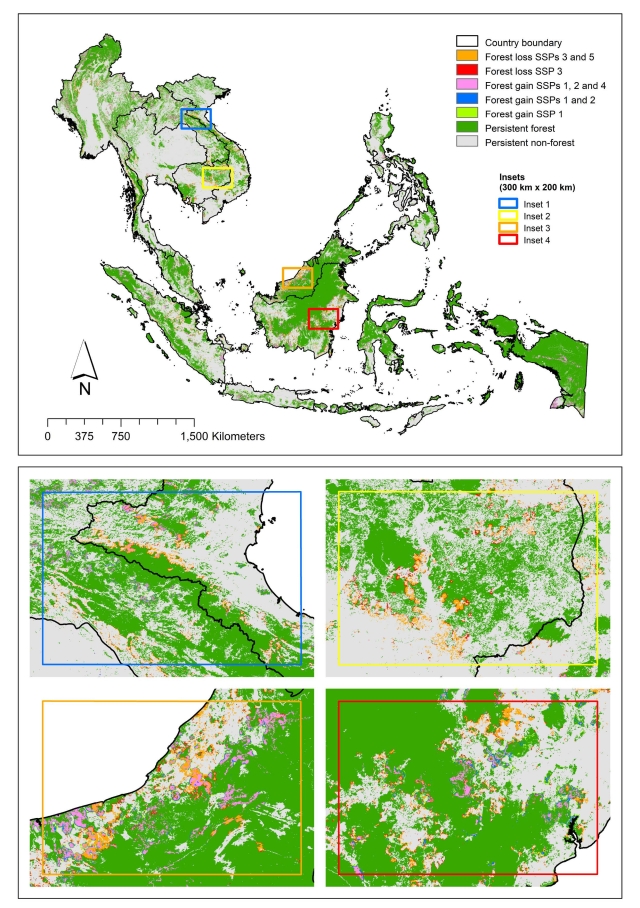Information of Paper
Author:Ronald C. Estoque, Makoto Ooba, Valerio Avitabile, Yasuaki Hijioka, Rajarshi DasGupta, Takuya Togawa and Yuji Murayama
Year:2019
Journal:Nature Communications, 10, 1829
Link to the paper
Abstract
While Southeast Asia’s forests play important roles in biodiversity conservation and global carbon (C) balance, the region is also a deforestation hotspot. Here, we consider the five shared socioeconomic pathways (SSPs) to portray a range of plausible futures for the region’s forests, employing a state-of-the-art land change modelling procedure and remotely sensed data. We find that by 2050 under the worst-case scenario, SSP 3 (regional rivalry/a rocky road), the region’s forests would shrink by 5.2 million ha. The region’s aboveground forest carbon stock (AFCS) would decrease by 790 Tg C, 21% of which would be due to old-growth forest loss. Conversely, under the best-case scenario, SSP 1 (sustainability/taking the green road), the region is projected to gain 19.6 million ha of forests and 1651 Tg C of AFCS. The choice of the pathway is thus critical for the future of the region’s forests and their ecosystem functions and services.





